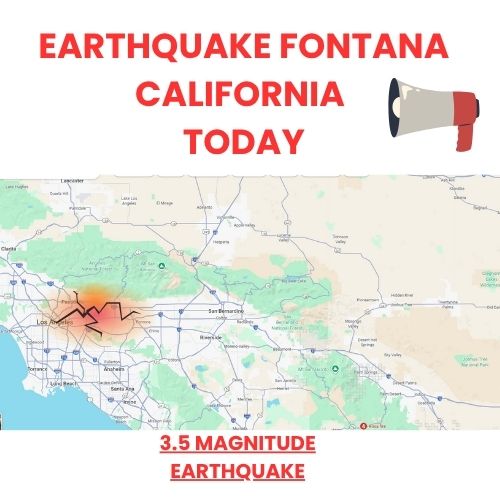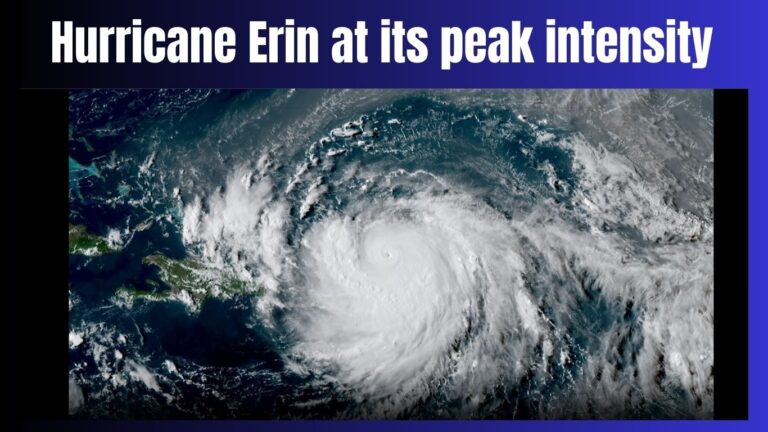Published on August 5, 2025
For more information about our editorial team, visit our About Us page.
NOAA Hurricane Joyce has officially formed in the central Atlantic, marking the fifth named storm of an already active 2025 Atlantic hurricane season. While the system currently poses no immediate threat of landfall in the United States, forecasters at the National Oceanic and Atmospheric Administration (NOAA) warn that Joyce could generate hazardous conditions along parts of the East Coast in the coming days.
This development underscores NOAA’s latest projection for an above-average 2025 hurricane season, leaving coastal communities with little room for complacency as we head into the peak months of storm activity.
- What We Know About Hurricane Joyce
- Where Is Joyce Heading?
- TROPICAL STORM DEXTER
- NOAA Hurricane Forecast 2025: Why This Season Is Different
- How Hurricane Joyce Compares to Past Systems
- How NOAA Tracks Storms Like Joyce
- What This Means for Coastal Communities
- How to Prepare for the 2025 Hurricane Season
- NOAA’s Message: Stay Alert, Stay Prepared
- Where to Get Reliable Information
What We Know About Hurricane Joyce
According to the National Hurricane Center (NHC), Hurricane Joyce formed late last week after strengthening from a tropical depression into a tropical storm, then intensifying into a Category 1 hurricane over the weekend.
As of Tuesday morning, Joyce is packing sustained winds near 80 mph with higher gusts. The storm’s center is located over open waters in the central Atlantic, moving northeast at approximately 15 mph. Its size is relatively compact compared to large, sprawling systems like 2020’s Hurricane Teddy, but experts note that compact storms can still deliver dangerous surf and rip currents to distant coastlines.
NOAA meteorologist Dr. Matthew Rosencrans shared insight on the storm:
“Joyce may not make landfall in the United States, but it’s a reminder of how active this season is expected to be. Even offshore storms can cause life-threatening rip currents and dangerous swells.”
Where Is Joyce Heading?
NOAA’s forecast models indicate that Hurricane Joyce will continue tracking northeastward, staying over open waters for much of its lifecycle.
Still, forecasters are quick to caution against complacency:
“Storm tracks can shift unexpectedly, especially when systems interact with changing atmospheric conditions,” said Rosencrans. “We advise anyone along the East Coast or in Bermuda to keep monitoring official NOAA updates.”
TROPICAL STORM DEXTER
The NHC’s five-day outlook shows Joyce weakening as it moves into cooler waters later this week, but the storm’s remnants could still influence shipping routes, marine traffic, and regional weather patterns, particularly across the North Atlantic.
NOAA Hurricane Forecast 2025: Why This Season Is Different
Hurricane Joyce serves as further evidence of NOAA’s updated August forecast, which predicts a busier-than-usual 2025 Atlantic hurricane season:
- Named Storms: 18–23
- Hurricanes: 8–12
- Major Hurricanes (Category 3 or higher): 4–6
This is well above the long-term seasonal average of 14 named storms, 7 hurricanes, and 3 major hurricanes.
Why Is 2025 Expected to Be More Active?
NOAA points to several contributing factors:
- Warmer Atlantic Waters: Sea surface temperatures are significantly above average — in some areas, by as much as 2–3°F higher than normal. This provides abundant fuel for storm development and rapid intensification.
- Weaker Wind Shear: Reduced vertical wind shear across the basin creates favorable conditions for storms to organize and maintain strength.
- Lingering Climate Change Effects: Scientists are observing long-term shifts in ocean and atmospheric patterns linked to climate change, including warmer oceans and altered jet stream behavior.
“We’ve seen a multi-year trend of elevated activity in the Atlantic,” explained NOAA climate scientist Dr. Sarah Harper. “This season’s outlook reflects a continuation of that pattern.”
How Hurricane Joyce Compares to Past Systems
Hurricane Joyce is the fifth named storm of the 2025 season — a benchmark reached earlier than average. Historically, the fifth named storm doesn’t typically form until mid-to-late August.
For comparison:
- In 2020, the fifth named storm formed by July 6 (an exceptionally active year).
- In 2017, which brought devastating storms like Harvey and Maria, the fifth storm formed on August 5.
This accelerated timeline for 2025 underscores how quickly the Atlantic is producing systems this year, validating NOAA’s above-average forecast.
How NOAA Tracks Storms Like Joyce
The National Hurricane Center, a division of NOAA, uses a combination of satellite imagery, reconnaissance aircraft, and advanced computer models to predict storm paths and potential impacts.
NOAA’s Key Tracking Tools:
- GOES Weather Satellites: Deliver real-time, high-resolution images of developing systems.
- Hurricane Hunter Aircraft: Collect data on wind speeds, pressure, and storm structure by flying directly into the eye.
- Computer Forecast Models: Project storm intensity, track, and probabilities for landfall.
“Our priority is to provide accurate, timely information so communities can make informed decisions,” said Ken Graham, director of the National Weather Service.
What This Means for Coastal Communities
Even though Hurricane Joyce is expected to stay out at sea, its formation is a wake-up call for residents in hurricane-prone areas.
FEMA Administrator Deanne Criswell emphasized:
“Preparedness isn’t just for major landfall events. Every storm has the potential to disrupt lives and infrastructure. Now is the time for communities to review their emergency plans.”
How to Prepare for the 2025 Hurricane Season
Whether or not Joyce makes direct impact, the above-average hurricane forecast means readiness is crucial.
1. Build an Emergency Kit
Include:
- Non-perishable food & water (3–5 days’ worth)
- Prescription medications
- Flashlights, batteries, and portable chargers
- Important documents in waterproof containers
2. Stay Informed
- Sign up for NOAA weather alerts.
- Monitor NHC advisories daily during active storms.
3. Create an Evacuation Plan
- Know your local evacuation routes.
- Plan for pets and family members with special needs.
4. Secure Your Property
- Install storm shutters or board up windows.
- Remove or secure outdoor furniture and debris.
NOAA’s Message: Stay Alert, Stay Prepared
As NOAA Hurricane Joyce continues to churn in the Atlantic, experts stress the importance of vigilance and preparation.
“We’re just entering the peak of hurricane season,” said Rosencrans. “Joyce is unlikely to be the last storm we track this year. Communities must stay ready for whatever the 2025 season brings.”
Where to Get Reliable Information
You Can Read More Such Articles :
Hurricane Gil 2025 , Fantastic Four Box Office , Hurricane Gil , Labubu Big Into Energy Secret , Dale Gribble , King Of The Hill Dale , Lake Piru California , Global Citizen Fest Tickets , NBA Summer League Las Vegas Tickets , Quotes for Snowfall 2025 , Farmers Almanac Winter Forecast for 2025–2026 , Hurricane Erin 2025 Tracker , Milwaukee Flooding , Times Square Shooting , Fortnite New Season Tropical Storm Hurricane Erin , 2025 Lego Batman Batmobile
Hurricane Gil Eastern Pacific Tracker: Path, Strength, and What to Expect
WWE SummerSlam 2025: Two-Night Spectacle at MetLife Stadium
Fantastic Four Box Office: Marvel’s Reboot Marks a Strong Start Despite Steep Drop
How Much Does Elon Musk Make an Hour? A Deep Dive into His Wealth








2 thoughts on “NOAA Hurricane Joyce Path: Latest Tracker and 2025 Forecast”